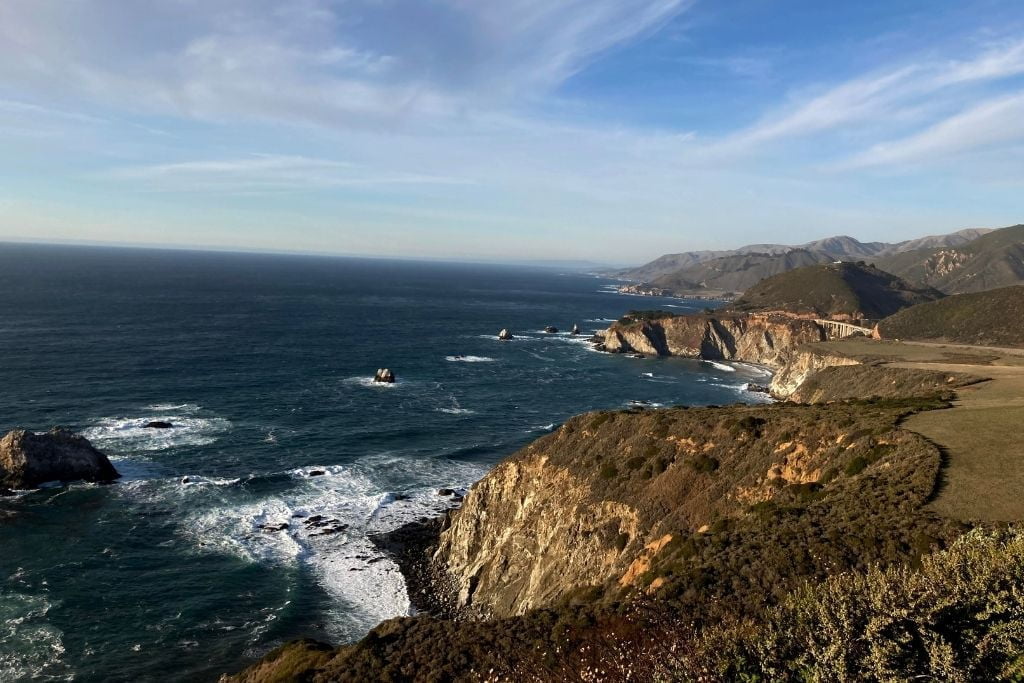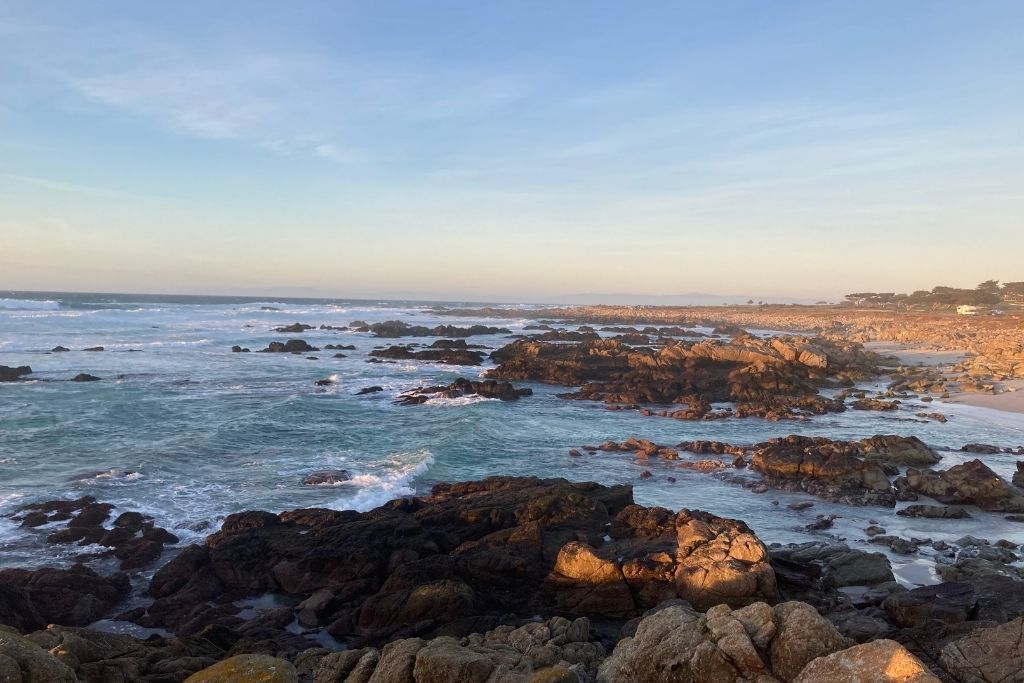By Rasika of Bae Area and Beyond
You’ve heard or read the phrase “reduce, reuse, recycle.” It’s been used to teach us how to reduce waste and be more environmentally conscious in a variety of situations – from reducing water usage to extending battery life in your cell phone. It is simple and easy to remember … but how do we apply these practices in our everyday lives? How do businesses and organizations implement these strategies?
Monterey County is the perfect example of how people and businesses have come together to create a sustainable world. There ar e specific strategies that these businesses have implemented regarding sustainability. Both old and new businesses in Monterey County take the lead in being a part of the solution, as well as creating positive change across the state of California. If you are planning a trip to Monterey County and would like your trip to be “greener”, then this guide will help you have a wonderful time while staying sustainable.

Why is Monterey County Considered Sustainable?
As every city and county is trying to be as green as possible, Monterey County is one such place whose efforts are worth noting:
- Monterey County has banned the usage of thin-film and polystyrene carryout bags in retail and grocery stores.
- More than 90 businesses in the county have been certified through the Monterey Bay Area Green Business Program.
- The county holds 14 farmer’s markets on a weekly basis. You’ll also find various vegetable and fruit stands as you drive through the county.
- Monterey County promotes sustainable seafood practices.
- The county has put together a Municipal Climate Action Plan that includes water conservation, energy efficiency, and waste management. The county officials plan to decrease emissions to 15%.

How to Get Around Sustainably in Monterey County
Monterey County is home to some of the most beautiful places in the world. From our coastline to the Salinas Valley and Carmel Valley, Monterey County has a lot to offer. While there are many things to do in Monterey County, how do we travel to each attraction sustainably? Monterey County offers a wide range of sustainable transportation options:
- Rent a bike or an e-bike: Monterey County has hundreds of miles of bicycle lanes that line the Pacific Ocean and travel through its parks and cities. For e-bikes, stop by Adventures by the Sea in Monterey or Mad Dogs & Englishmen Bike Shop in Carmel-by-the-Sea. Try the 18-mile Monterey Bay Coastal Recreation Trail that starts in Castroville and ends in Pacific Grove. You can bike for free in the Del Monte Forest during the weekdays. Make sure to bike through the 17-Mile Drive; you’ll see beautiful houses and golf courses with the ocean on the other side.
- Rent a surrey: Want to bike together with your family or friends? Try a surrey; that’s a bike with 4 wheels and multiple sets of bicycle pedals. Plus, there’s a canopy on the top; perfect for those sunny days. Rent it out at one of the Adventures by the Sea locations in Monterey.
- Public transit: Take the Monterey–Salinas Transit that runs throughout the county and surrounding towns.
- Free Monterey trolley: If you’re exploring Monterey between June and August or on weekends during the non-peak season, take the free MST Monterey Trolley.
- Rent a kayak: Instead of taking fuel-supported water vehicles, rent out a kayak to see the beauty of Monterey Bay.
- Rent an electric car: Rent an electric car at a car rental. You can find car charging locations in the area by visiting PlugShare. If you need to use a gas-powered car, drive it in Eco/Econ mode to maximize fuel efficiency.


Where to Stay Sustainably in Monterey County
If you are planning to visit Monterey County soon, then you’ll want to know the best environmentally conscious places to stay. Camping is the best option, and you can find more information on Recreation.gov or local park sites. However, if you’re looking to stay in a hotel, here are a few lodging options that practice sustainability:
- InterContinental the Clement Monterey:This hotel uses energy-saving processes in the building and ozone washing treatments for the hotel rooms’ linen materials. Located in the hotel, the C restaurant + bar uses sustainable seafood practices. No plastic straws and no single-use plastics for liquids are used. Biodegradable containers made with sugar cane and potato are used for carryout items.
- Quail Lodge & Golf Club: Around 50 trees are planted every year around this lodge. They incorporate motion lighting for energy-saving and their golf carts run on electricity. Their golf carts use various recycled materials. Other materials including paper, batteries and bottle cans are recycled.
- Portola Hotel & Spa:This hotel is LEED® certified and provides sustainable food and drink options in the hotel. By being an active participant in the Monterey Regional Food Scrap and Composting program, they make sure that excess food doesn’t get wasted.

How to Travel Sustainably in Monterey County
Traveling sustainably may be new, but there are plenty of ways to do so locally in Monterey County. Here are 9 tips for sustainable travel:
- When deciding on what type of guides and tours to book, choose eco-friendly tours and local guides.
- Make sure you are packing essential items that can be reused and/or recycled. These can include reusable water bottles and recycled shopping bags.
- Practice the “Leave No Trace” concept. Whenever you explore natural attractions, make sure you’re leaving the place as it was before you walked in. For example, do not litter the place, stick to established hiking trails, don’t touch flora, etc.
- If you’re staying in a hotel, use energy-saving practices. These could include turning off the TV and the lights when you leave your hotel room. If you’re staying in the room for a couple of days, you can use the “Do Not Disturb” door hanger to prevent the cleaning staff from cleaning your room daily. This helps in conserving electricity, cleaning supplies and labor.
- Utilize sustainable ways of traveling around Monterey County. Most times, these transportation options allow you to explore the area more deeply.
- Immerse yourself in more natural attractions in and near Monterey County. These could include beaches, national and state parks (the Pinnacles National Park is a must-see!) and, hiking trails.
- Intentionally buy foods and gifts that are local to the area. Learn and respect the local traditions and culture. If you’re unsure if a product was created safely, ask about it.
- Thinking about what type of entertainment to check out? Choose art, dance, music, or other forms of entertainment that are local to Monterey County.
- Apart from exploring the county’s attractions, you might want to look into local projects that the county is involved in. Being informed about why the county has made specific environmental and social decisions helps you appreciate the area more.


Conclusion
That wraps up my sustainable guide to Monterey County. If you are traveling to Monterey County, we hope that this guide helps you have a fun and safe time while being eco-friendly! Travel responsibly!